In his 1984 book Influence, Robert Cialdini shared many academic theories that greatly impacted modern marketing. What original research had shown was that people regularly took specific actions when presented with offers using certain influences. His book set the stage for an era of persuasive messaging designed to sell more using factors like Authority, Social Validation and Scarcity. We wanted to share key concepts and examples of creating desire and use them to help you improve your website conversion rates.
TRIGGERS FOR CREATING DESIRE
Creating Desire with Scarcity
Hurry! While Supplies Last! Limited Time Offer!
We see these stimulating expressions quite regularly, from the extra set of ginsu knives to the two free extra mini-ShamWows. If you order now, you get the better deal. FOMO – Fear Of Missing Out – drives numerous transactions around the world. Website visitors find offers more attractive if the product is scarce, rare or has limited availability.
Examples
Amazon Deal of the Day

With a limited time offer that even includes a live countdown timer, Amazon’s Deal of the Day creates visual urgency.
Orbitz Booking

Takeaway
- Think about a special offer you can bring to market, one that you can provide for a limited time. Build a library of these offers and cycle them.
- Experiment with wording to reflect scarcity, including “this month only”, “limited time”, and “only X left”.
Creating Desire through Social Proof
Website visitors are persuaded by evidence that others, especially from similar people, are also on board with the offer. We’ve written about the value of social proof before – reviews and testimonials show us that your product passes muster. 5-star reviews, “twinsumer” testimonials, case studies and customer logos all reflect positively. Having a large number of them is especially persuasive (herd mentality!).
Examples
Yelp

Yelp is clearly a first tier community review site. Even though Yelpers are often polarized (typically flame or adore), the system is largely trusted. High ratings generally mean more traffic, and diverse reviewers mean more potential for a reader to find one that aligns to her viewpoint.
Amazon Customer Reviews
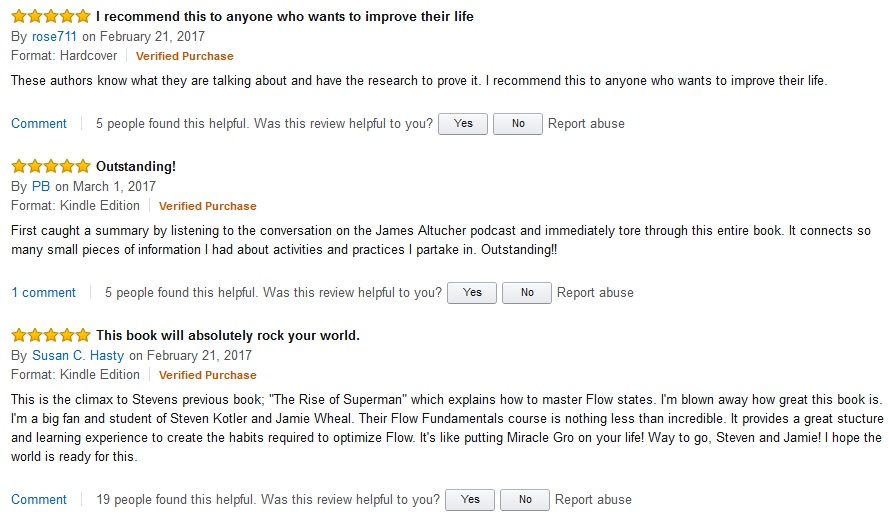
If you purchase books on Amazon, no doubt you peruse the user reviews prior to your purchase. We scan for opinions that are helpful or sound “like us” – that is, if the review writer has a tone similar to our own, we’ll trust that reviewer more. “It sucks” is not as convincing as “The book’s plot didn’t fully meet my expectations, and many of the details were lost by the end.”
Takeaway
- Make collection of testimonials a regular part of your business workflow (for example, right after delivery of your product or service). You don’t have to specifically request testimonials, but gather comments (if you’re doing things right, they ARE testimonials).
- If your business is on Yelp and Facebook, encourage reviews. Yelp and Facebook drive a great deal of traffic because they are both “authority” sites for community feedback.
- If your site can showcase its own testimonials and reviews, that’s great also (you don’t exclusively have to rely on third party websites).
Creating Desire with Authority
Website visitors are more willing to trust a product, service or company who they attribute relevant authority or expertise. If you are a household brand name, you’re set as an authority (Google, Coke, Intel, Mattel, Apple…). If not, have you won badges, awards and endorsements? Perhaps your site was mentioned by a famous blogger (hello, Seth Godin!) or included in a local blogger’s “best of” list – if so, then you have established authority.
Examples
NYT Best Sellers
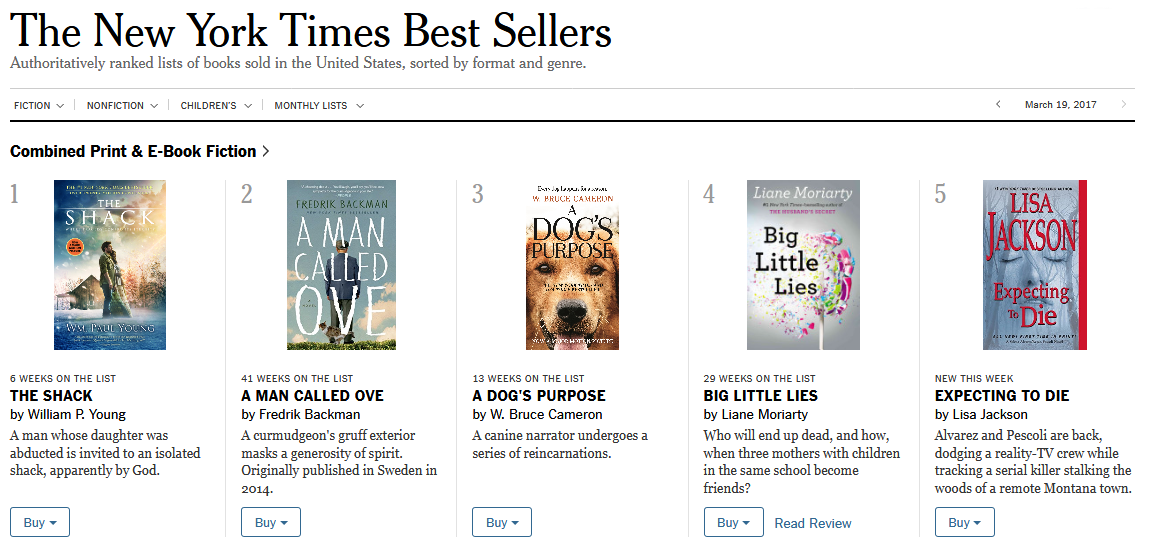
Most authors probably secretly, if not publicly, hope their work lands on the NYT Best Sellers list. Many new books actually design campaigns (sharing, review requests, gifting programs…) to create enough marketing momentum to do so. Aside from visibility, this list is an authority on “what’s good”, a trusted resource for the best books.
PC Magazine Award

For software companies, “trophies” like industry awards can really build influence. Especially with specialized markets (like website design, organic foods, women’s health), earning recognition in the marketplace can help find more members for your tribe. Be sure you include the badges prominently on your website.
Takeaway
- Submit your product to competitions to win awards. Post badges for any you win. Press release them too!
- Look for opportunities to work with authorities in your industry, perhaps as a sponsor of an event, to establish a relationship.
- If you can guest blog on a relevant authority website, you gain credibility. For example, if your product is for startups and you’re on Inc. or Fast Company, you build authority.
Creating Desire via Reciprocity
Website visitors will comply with requests from those who have provided something first. Think about it – if someone gives you something for free, you have this strange human feeling of being indebted. That’s the principal of reciprocity. You may hear people say “give to get”, which implies that if someone receives something for free (or cheap), they will want to repay that debt somehow.
Examples
Spotify Free Trial
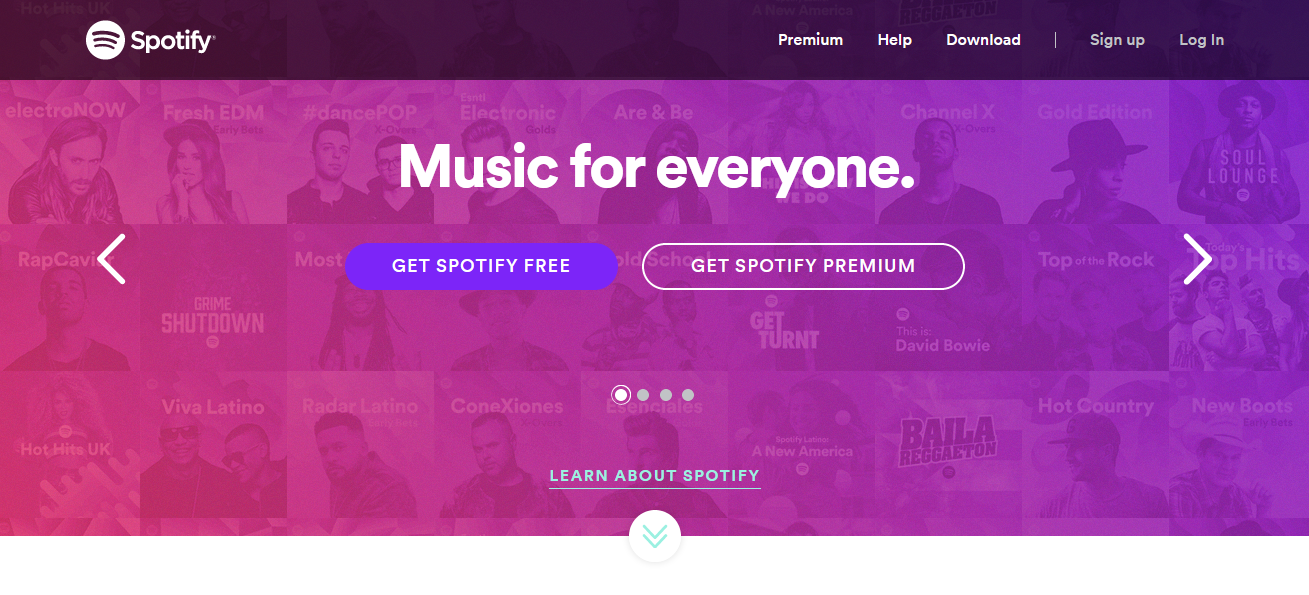
Giving music lovers unlimited access to the world’s largest online music collection for 30 days not only entices them into a sales funnel, but it also creates that nagging feeling for reciprocation.
Copyblogger eBook
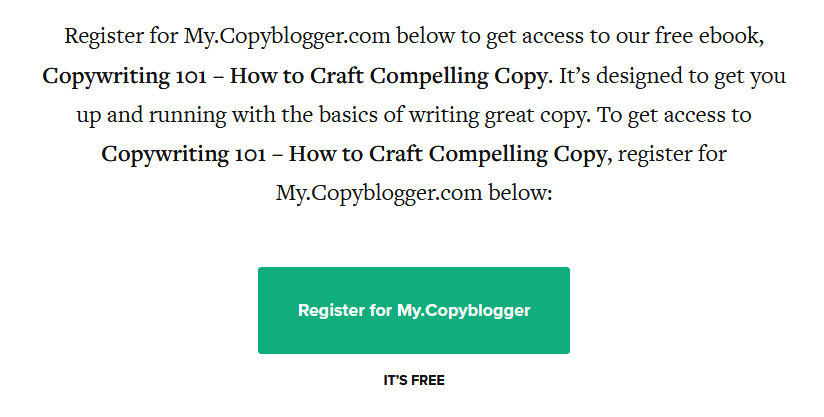
For website managers who want to learn from the best, Copyblogger’s online training is hard to beat. They entice potential customers with a free eBook, which adds them to the email list for future course sales.
Takeaway
- What can you give to a potential prospect? Free ebooks, articles, webinars, podcasts, trial?
- How can you use reciprocity to build graduating sales funnels using a series of steps? For example, those who take offer #1 receive offer #2, and those who take offer #2 receive offer #3.
Creating Desire through Loss Aversion
We are intrinsically afraid of losses – people dislike losing more than they like winning, even if the amounts are equal. That is, you’d be more unhappy over losing $100 than happy if you found the same amount. You can use this psychological trigger when writing your website headlines. Focus on what your prospect will lose if they don’t take your fabulous offer. For example, “Don’t waste $200 every month on sugar-laden smoothies. Buy Smart Pressed Juice!”. You could also offer a free add-on product. For example, “Order now and get a free shaker for your juice.” Customers are more likely to choose something with a free gift, even if the value of the gift is less than that of a discounted comparable item!
Examples
Macy’s Free Gift with Purchase
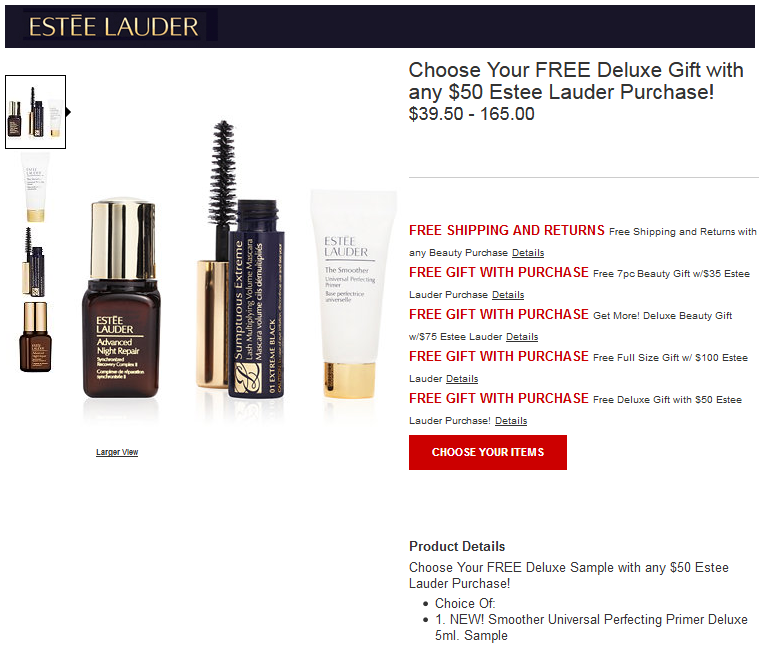
In the cosmetics market, they regularly offer special packages that utilize loss aversion. “Well, I’m going to buy this perfume anyway, why would I not get the skin conditioner too?”.
HubSpot Free Trial
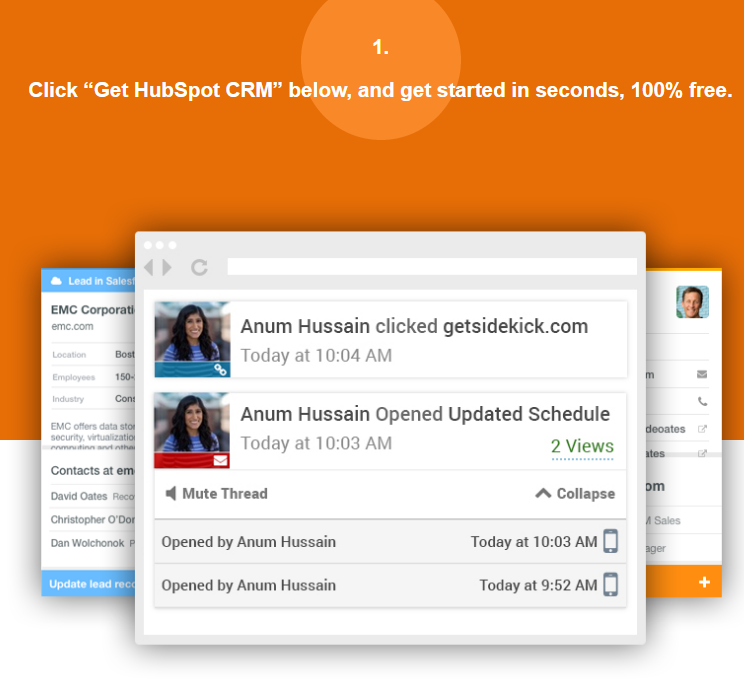
For something like Software as a Service (SaaS), the freemium model has become a standard practice. For a system like HubSpot, you are essentially loading in real data to evaluate it, which becomes an investment in the product. This easily becomes loss aversion for many customers – after the free trial ends, do you want to part with that investment?
Takeaways
- Use language that implies your visitors already have your product – so if they don’t have it, they lose. Use words like imagine, visualize and picture.
- Consider a freemium model if it fits your business. If someone can try your product and get embedded with it, it’s hard to stop using it.
Creating Desire Using Status Quo Bias
By nature, people prefer things to stay the same by doing nothing. “80% of buyers actually make it to the end of the sales cycle and make NO DECISION,” said Tim Riesterer, chief strategy and marketing officer at Corporate Visions. “They choose to do nothing different and stay with the status quo. They didn’t choose a competitor; they chose not to change – because change is really hard.” What’s hard in marketing is that even when only small transition costs are involved and the importance of the decision is great, Status Quo Bias remains in effect. If you are the brand with loyalty, it works in your favor. If you’re trying to unseat an incumbent, you need to find ways to overcome it.
Examples
T-Mobile
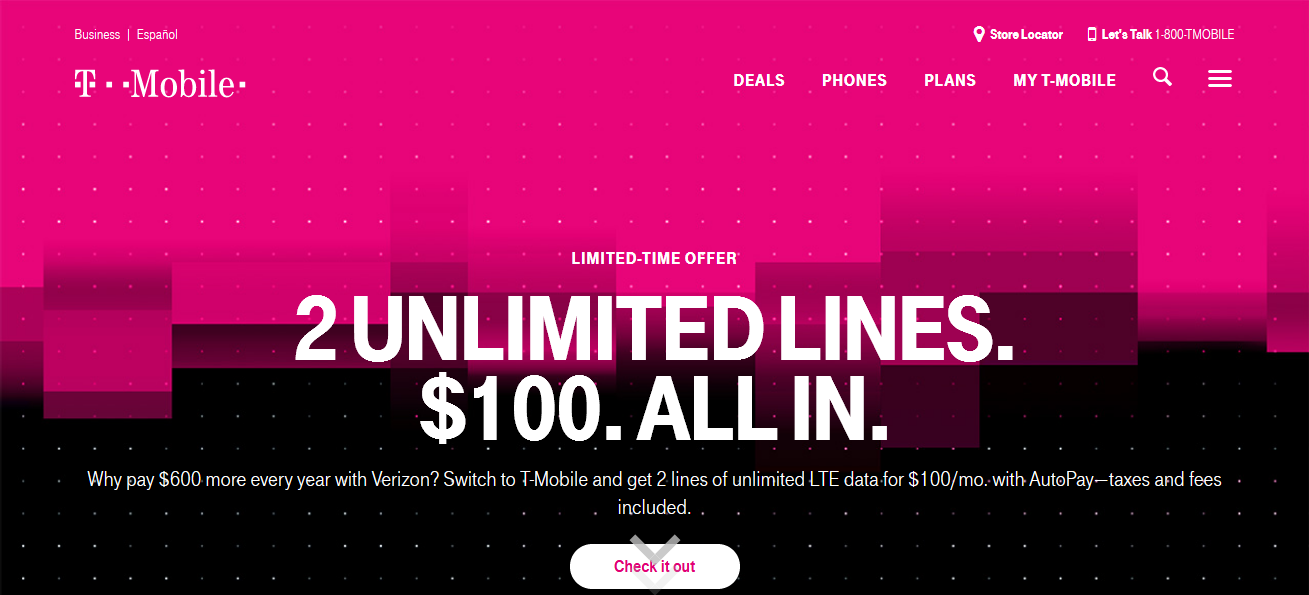
In the uber-competitive mobile phone market, carriers are all trying to unseat their competition – the main way to grow your business is to steal from competitors. In this case, T-Mobile calls out Verizon specifically, illustrating how much money customers could save by switching.
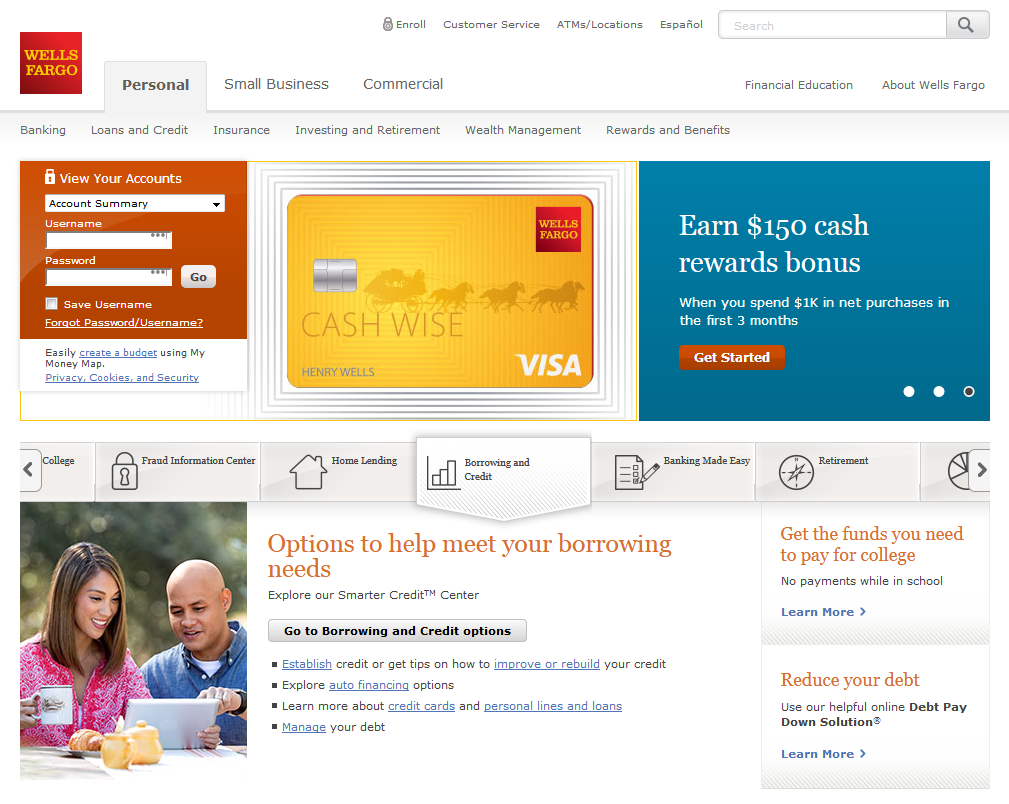
Wells Fargo
For banking, it’s not terribly challenging for the incumbent. One of the “sticky” ways to keep customers is offering additional products and services. Notice how Wells Fargo treats every visitor as they are already a customer (visitors very well might be).
Takeaways
- To overcome a competitor’s bias, get your website visitors to make a psychological investment in the buying process.
- Show that the cost of staying the same is MORE costly than change. Buyers need to feel like they can’t stay put.
- Focus on one or two of your differentiating strengths to avoid analysis paralysis.
CREATING DESIRE
Personally, we all crave being desired. In business, we need to create desire to drive sales and revenue. As a marketer, creating desire is a critical part of the customer journey. Creating desire can rely on many of these founding ideas – and it’s always best to run tests to see what works best for your products and services. Experiment with offers that reflect scarcity, include badges for authority, encourage users to share positive reviews as social proof and fight your big competitors’ status quo bias by getting some initial buy-in during the sales workflow. These tests are not manipulative – they are the way of marketing. We all make choices based on these principles every day, from how we spend our time to where we send our money.
RECOMMENDED READING
The Reciprocity Principle: Give Before You Take in Web Design





![Video Engagement [Infographic]](https://twistedpuppy.com/wp-content/uploads/2017/08/twisted-puppy-blog-video-engagement-1-500x383.png)
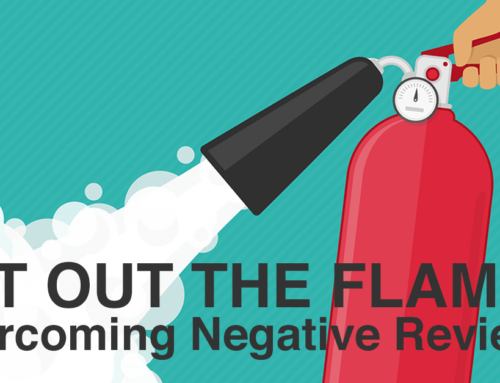
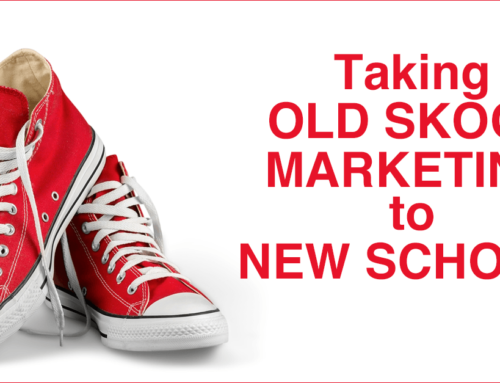
Very, very good info…now to implement some of it is the task.